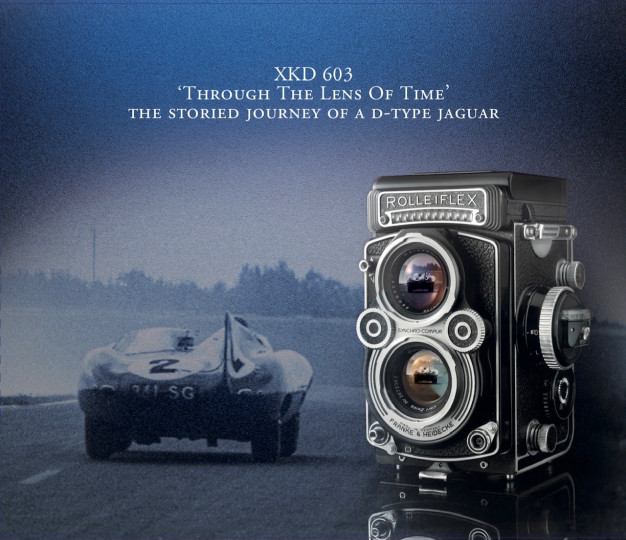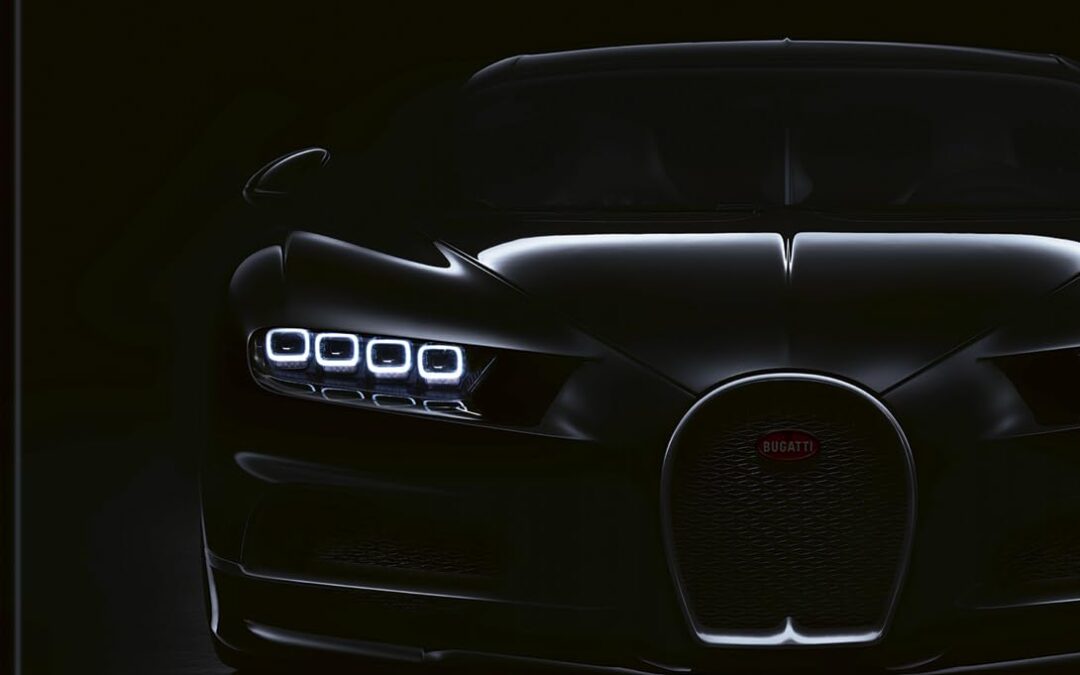
• Star photographer René Staud provides the ultimate proof: Black is beautiful
• From the legendary Alfa Romeo 8C from the 1930s, to the Bugatti Veyron Grand Sport Vitesse, the fastest open-top series sports car
• With exciting texts by Jürgen Lewandowski and contributions by Andrea Zagato (CEO Zagato), the head of design at Mercedes, Gorden Wagener and design critic Stephen Bayley
René Staud, the grand master of automobile photography, has published a new illustrated book. In his coffee-table book Black Beauties, the automotive photographer devotes himself entirely to the color black. In this extraordinarily book, Staud takes car lovers on a journey through time and presents the top models of the world’s greatest sports car brands. From the legendary Alfa Romeo 8C from the 1930s, to the declared goddess Citroën DS, to the fastest open-top series sports car, the Bugatti Veyron Grand Sport Vitesse, the star photographer demonstrates the aesthetics that the color black lends a car. Staud’s photographs are characterized by his trademark striking style and uniquely showcase the classic elegance and sporting potency of the vehicles. But this impressive coffee table book does not only inspire with its great photos. The texts are by Jürgen Lewandowski, a luminary in automotive journalism and author of over 90 books on the subject. In addition, comments by Andrea Zagato (CEO Zagato), Gorden Wagener (head of design Mercedes) and Stephen Bayley (journalist and design critic) are included to provide the reader with specific insider knowledge from the industry. Text in English and German.
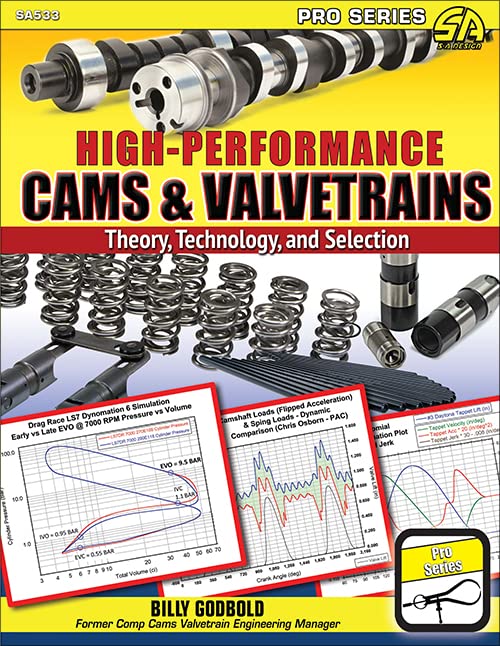
Understand the “magic” of how optimized camshafts extract the most performance from every engine component, eliminating valvetrain guesswork.
Camshafts are the coach and conductor of any four-stroke engine from early flatheads to modern Formula 1. Performance engines are amazingly sensitive to how and when the valves to the combustion chamber open and close. The valvetrain configuration and flow characteristics may change significantly between applications, but the fundamental principles are universal. This allows the language, setup, dynamics, energy, and pressure aspects of a valvetrain to be covered in a way that is just as useful for optimizing a sub-15-hp go-kart engine as it is on a 500-plus-hp street engine or modern 1,500-plus-hp NHRA Pro Stock engine.
In High-Performance Cams and Valvetrains: Theory, Technology, and Selection, farm-kid-turned-physicist Billy Godbold combines his quarter-century of experience with valvetrains at Comp Cams, Lunati, Crane Cams, and Edelbrock with the techniques he uses with professional teams in NASCAR, the NHRA, road racing, dirt-track racing, offshore racing, and land speed racing. He guides you to think about any valvetrain system with his perspective. Often lighthearted and filled with analogies, this book endeavors to make complex concepts easy to understand without watering down important details.
Specific configurations and applications are covered, providing techniques and examples for optimizing camshafts and the valvetrain around intakes, headers, superchargers, turbochargers, fuels, carburetors, and modern EFI applications. If you are planning or building a performance engine, or if you just want to know the science behind how cams and valvetrains work, this book is an indispensable resource.
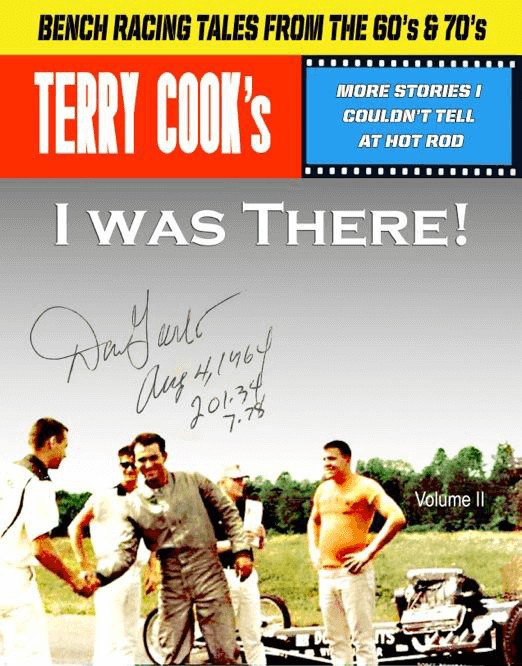
Don Garlits on flying saucers, God and politics, Hand Grenade Harry with tales from the Pond, Sal fish, John Force, Jocko Johnson, Malcolm Bricklin, the Surfers, the Prince of Monaco, Danny Thompson, Bill Maverick Golden, Connie Swingle, Wild Bill Shrewsberry, Emmerson Fittipaldi, test pilot Darryll Greenamyer and Chris the Greek Karamesines.
Chock full of nostalgic knee-slappers from Squires of Chatham, lurid never before told craziness from the vortex of custom van movement, the Cannonball Run, indoor drag races, 46.2 g’s of deceleration, the best car practical joke ever, Europe by low rider, the incredible Car Craft Hemi Cuda, my ten favorite car events, 80 foot flamethrowers and more…
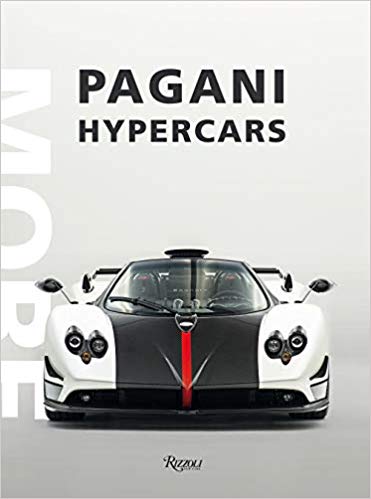
The first book on the body of work of Horacio Pagani, a true visionary, with spectacular photographs that transform Pagani’s extreme sports cars into unique and fascinating entities. A must-have book for all car and sports lovers.
Horacio Pagani’s work is a great adventure in artistic and engineering excellence. This book celebrates Pagani’s legendary supercars, which the wealthiest people in the world are prepared to spend a fortune on. Stunning photographs, aesthetic refinement, and perfectionism combine in this one-of-a-kind book.
The book offers a rare glimpse into how Pagani’s spectacular creations come about–how a very ambitious project can sprout from an intuition and flow into an outstanding, unique, and incomparable product.
Seven iconic cars are included from the Zonda and Huayra lines. The Zonda is a mid-engined car. It debuted in 1999, and production ended in 2017 with the 760 series cars and other commemorative special editions being produced till the same year. The Pagani Huayra succeeded the Zonda. It is named after Huayra-tata, a Quechua wind god. The Huayra was named Hypercar of the Year 2012 by Top Gear magazine and received a very positive review when tested by Richard Hammond on Top Gear.
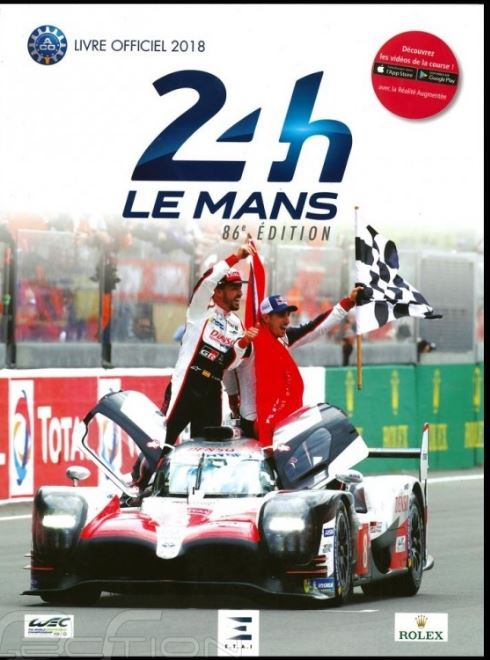
This is the official year book of the 86th Le Mans 24 Hours.
In 2018, Toyota the odds-on favourite came to the Sarthe to break its jinx and take on the Gods of Le Mans who, up till then, had always shown extreme cruelty by robbing the Japanese manufacturer of a triumph that seemed promised to it on several occasions, in particular: 1998, 1999, 2014, 2016 and 2017. Finally, the world no.1 car manufacturer broke the spell and emerged on top.
Toyota honoured its rank and scored its first victory in the Le Mans 24 Hours on its 20th attempt as a works team clinching a double into the bargain! The win went to Sébastien Buemi from Switzerland and Kazuki Nakajima from Japan, who had just missed out on victory two years earlier, backed up by double F1 world champion, Fernando Alonso. The Spaniard, who was the star of this year’s race, added another jewel to the Triple Crown (victory in the Le Mans 24 Hours, the Indy 500 and the Formula 1 World Championship title) that is the stuff of dreams.
But the three drivers had to really push as their teammates never gave them an inch. Completing the podium was Rebellion Racing and its star from the Vendée Thomas Laurent who had hit the headlines a year earlier by finishing second overall and first in LM P2. This year the no. 26 Oreca 07 dominated this category before being disqualified in post-race scrutineering gifting victory to the Signatech Matmut team and Nicolas Lapierre-André Negrao-Pierre Thiriet.
Back in the GTE Pro category after a 7-year hiatus BMW was unable to prevent the Porsche 911 RSR “Pink Pig” from winning the category thanks to Kevin Estre, Michael Christensen and Laurens Vanthoor. The Zuffenhausen firm also scooped the pool in GTE Am with the Proton Racing team co-owned by Patrick Dempsey with a little help from an 18-year-old French rookie called Julien Andlauer (remember this name).
With Rafael Nadal as starter and Jacky Ickx as Grand Marshal the latest staging of the greatest endurance race in the world was full of interest. Relive it through the many marvellous photos on display in this annual!
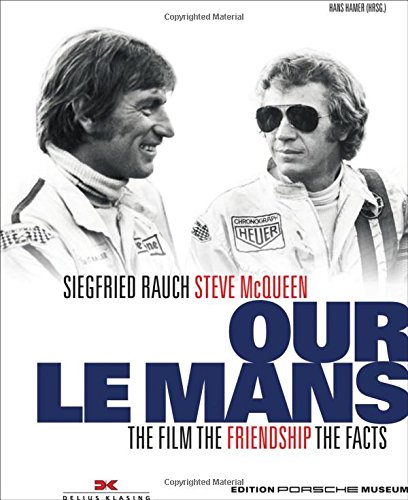
Documents the friendship between Steve McQueen and his Le Mans co-star Siegfried Rauch
•Includes photos of Rauch’s family album, as well as original photos of the film set and of rare documents
•Features interviews with contemporary witnesses
Steve McQueen: actor, filmmaker, racing driver – and friend. Siegfried Rauch, who plays McQueen’s unyielding rival in the film classic Le Mans, was a close friend of the actor in real life. Rauch takes us through this book and, for the first time, tells us how it was: what McQueen was like, the time he ate sauerkraut at the Rauch’s, or played with their children – and how he became their godfather. Rauch shows a different, private side to the ‘king of cool’.
The other stars of Le Mans have their say as well: the real racing drivers. Herbert Linge reminisces about the Porsche 908 – which belonged to McQueen – that Linge drove as a dolly during the race. Hans Herrmann and Richard Attwood tell about their victory in the Porsche 917 – the first Porsche overall victory at the Sarthe. Stuntman Dr. Erich Glavitza, who also prepared the cars, explains what happened in 1970 during the shooting in ‘Solar Village’, and David Piper, who lost a leg during the production.
This unique book offers completely new insights into the filming of what has become a cult classic.

This book fills the gaps in Formula 1 records. The 70 years of F1 can be neatly divided into two eras at January 1980. At that point the terms “Grand Prix” and “World Championship’ became synonymous.
Until then, over half of F1 races were not included in the Championship for the spurious reason that each country should have just a single race. This does a disservice to the achievements of drivers of the Fangio, Moss, Clark and Stewart era and even more-so to the four pre-championship years which began in 1946.
When a commentator says “Rosberg’s 16th win equals the F1 wins of Stirling Moss” this is manifestly untrue. If the same drivers, in the same cars, compete at the same tracks, and over a similar distance, then each race deserves to have its place in the records as a “Championship quality” event.
This book includes such races alongside contemporary Championship races and, combined with known figures since 1980, produces what can surely be accepted as “The Real Score” of Formula 1.

If you’ve ever wondered what it’s like to lap the “old” Nurburgring (Nordschleife) or Brands Hatch in one of the fastest race cars ever built and with a World Champion driver, now’s your chance to find out!
We put an in-car camera in a works Rothmans Porsche 956 with Derek Bell, giving you a terrific driver’s-eye-view as he takes you round seven of the world’s greatest racing circuits at up to 220mph!
The car is a 650bhp World Championship-winning racing sports car and the driver’s eye-view is riveting – how does the fifth fastest ever lap of the marvellous Nordschleife circuit sound? Or an average of over 120mph around the spectacular Spa Francorchamps circuit?
It’s all here on high quality DVD – an exhilarating experience for you to enjoy time and again!
The circuits you lap are: Silverstone, Nurburgring Nordschleife, Le Mans, Spa Francorchamps, Brands Hatch, Fuji Speedway & Kyalami.
Plus, there’s a bonus lap of Mosport – Canada’s “mini Nurburgring” with Vern Schuppan.
‘These movies are available on a DVD entitled In Car 956, and if you don’t have it I beg you to put that right – it’s worth having for the Nurburging footage alone’ Nigel Roebuck, Autosport May 2007
‘I didn’t appreciate how awesome the 650hp 956 is, nor how incredible a 6mins 41secs lap of the old Nurburgring is… the footage is superb… the laps of Le Mans are just devastating. Bell (now an MBE) won Le Mans five times. He is a God’ Evo
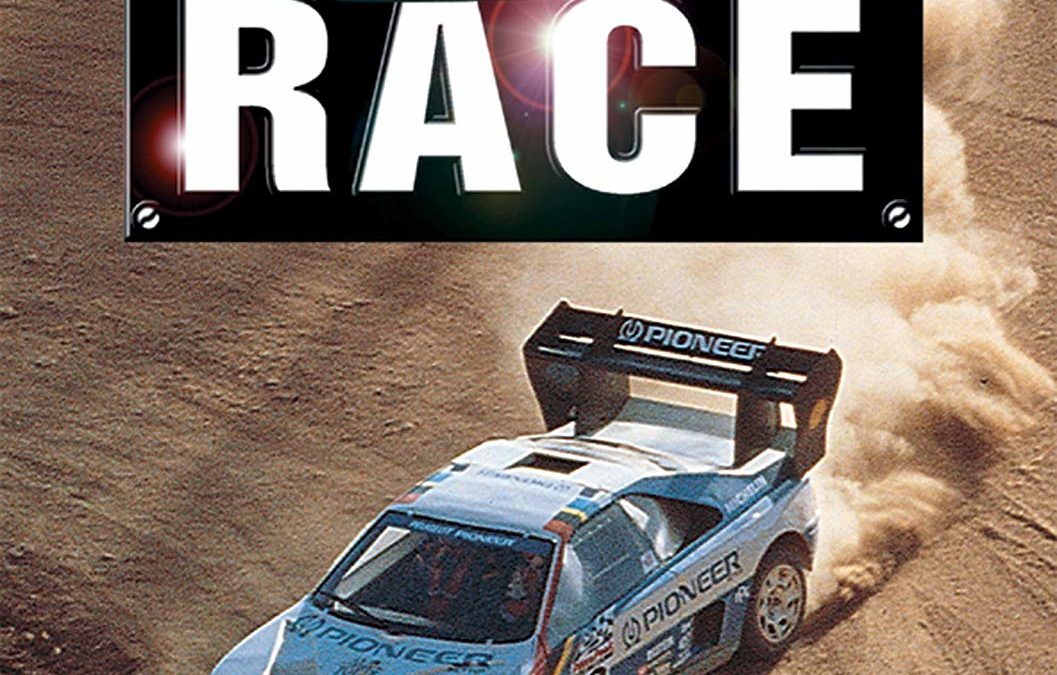
The ‘Group B’ International Motorsports Category was conceived in the late seventies as a return to the good old days when amateur and factory teams alike could run the same production-based cars in either sports car racing or championship rally events. By the early eighties the class had become the ‘Godzilla’ of the rally scene and what resulted were the most awesome cars ever seen on the rally stages of the world – 600 horsepower, 4WD, turbocharged monsters that could cover forest, tarmac or gravel stages faster than anything ever seen before or since. In 1986 the door was slammed shut on the F1 cars of mountain and forest roads. Faster and faster cars combined with wilder and crazier crowds meant that within the confines of rally car competition the group B rocket ships were just “too fast to race.”
The legacy of Group B, however, is a whole range of spectacular cars that continue to thrill enthusiasts. Features the Ford RS200, Lancia 037 Rally, Lancia S4, MG Metro 6R4, Peugeot 205/T16, Audi Quattro, Renault 5 Turbo, Opel, Citroen also the amazing Ferrari 288GTO Evoluzione, Jaguar XJ220 supercar and Porsche 959 – the car that came closest of all to fulfilling the Group B ethos. It won both the Paris-Dakar and its class in the Le Mans 24 Hour Race!
Includes awesome action footage and stunning close ups.

Whether it’s a new Formula One V10 wailing at almost 20,000rpm or the metallic howl of a classic V12, there is nothing on earth like the sound of a racing car at full speed – and if it’s a bright red Ferrari screaming by flat-out, then so much the better.
“Red Noise” has been produced by broadcast audio specialists to bring those sounds right into your living room, your car or your stereo headphones. It utilises incredible recordings made in areas that the general public can never hope to reach….with microphones mounted on the trackside guard rails, and even from right inside the famous Monaco tunnel!
Listen to the sounds of Ferraris, Maseratis and Alfa Romeos spanning more than 75 years of motor racing history and featuring the world’s most famous Grand Prix cars.
This is a genuinely unique aural experience, so push the ‘play’ button, close your eyes and let your imagination and “Red Noise” take you right to the trackside.
Ferraris – Old and New1. See Red, Hear Red! The Vintage Sports Car Club stages an annual meeting at Donington Park that is themed around Italian racing cars. ‘See Red’ is the name of the VSCC meeting and we went there to give you the chance to ‘Hear Red’ ! First there’s the harsh engine notes of a 1980 Ferrari 312T5 ‘flat-12’ (a car actually driven by Gilles Villeneuve!) This is followed by an ex-Michael Schumacher team car from 2002 which we hear idling, picking up the revs, warming up, then finally pulling out of the pits with that distinctive V10 howl.
2. Monaco Ferrari Parade There was a fantastic gathering of Ferraris at the Monaco Historic Grand Prix in 2004. We were there to record all those incredible sounds! Cars ranged from the very first Type 125 1500cc supercharged GP car as driven by Alberto Ascari to a 21st-century Schumacher V10. In fact, there were no less than five vee-tens on hand – two Eddie Irvine cars from 1997 and three Schumacher cars from 1998/99 and 2000.
3. Picking up the Pace More from La Piscine as the real demonstration got under way and the cars picked up to racing speeds. No wonder the Italian commentator was getting excited!
4. Old and New in Action Old and new cars take La Piscine en masse. The field includes both four-cylinder and V12 cars from the ‘fifties, a 3-litre Type 312 V12 from 1968 and no less than seven Type 312 flat-twelve ‘boxer’ engine cars. From more recent times there were V12s as driven by Michele Alboreto in 1987, Nigel Mansell in 1990 and Alain Prost in 1991. And last, but very far from least, were the five Irvine and Schumacher vee-tens! They all mean music to the ears of the ‘Ferraristi’….
5. More from Monaco More ‘red noise’ from the Monaco 2004 Ferrari tribute high-speed demonstration laps. Similar to the previous tracks but too good to waste – especially as we were recording with microphones actually right on the Monaco trackside guard rails!
6. Flat-Out Red! And now for a change of recording point – here are Ferraris- old and new – passing at speed on the Monaco start/finish straight.
7. Generations Apart A 1999 ex-Schumacher Ferrari V10 takes La Piscine in conjunction with a rear-engined Ferrari 246 ‘Dino’ V6 that Italy’s Lorenzo Bandini took to second place here at Monaco in 1966. Then comes a 2.5 litre Ferrari Type 625 – the car that Frenchman, Maurice Trintignant, won Monaco with in 1955. The old front-engined ‘four’ takes La Piscine in conjunction with another modern Ferrari V10.
8. The Ferrari Type 312 V12 Sit back and listen to the first Ferrari Type 312 warming up and blasting through the Monaco tunnel.
9. Jackie Ickx Remembers Belgian Grand Prix and Le Mans star, Jackie Ickx, was a young Ferrari driver in the early nineteen-seventies. He remembers those times for us and tells us what it was like to race at Monaco back then.
10. Flat-Twelve Ferraris Not until Ferrari re-designed its 3-litre V12 did they start scoring World Championship successes again. It powered Niki Lauda to world titles in 1975 and 1977, as well as Jody Scheckter in 1979. The engine had a distinctly harsh note. We hear it warming up at Monaco, then making several echoing passes through the Monaco tunnel and, finally, negotiating the La Piscine sequence of tight turns.
11. The ‘Other Flat-Twelve’ There was another ‘flat-twelve’ built in Italy during the seventies, this one by the Alfa Romeo team in Milan. This is what that car would have sounded like back then, warming up and then blasting off, flat-out.
12. The Last F1 Vee-Twelves Ferrari stuck with V12 engine power right through the mid-nineties with Frenchman, Jean Alesi and Austria’s Gerhardt Berger driving the Type 412 team cars until the end of the 1995 season. By then, it was obvious that the V10 layout was definitely the most efficient of all of the Formula One options. Even so, the heavier, longer V12 took the 412 to a number of GP wins – and it sounded great in the process!
13. Into the 21st Century This is the unmistakable sound of V10-powered Ferraris howling by our microphones on the trackside barriers. First we hear some individual passes, then a whole group of vee-tens finish the track. These are all cars driven by either Michael Schumacher or Eddie Irvine between 1997 and 2000.
Maserati from Modena
14. Vintage Red Maserati is one of the oldest names in motorsport. Listen to a couple of vintage Maserati racers warming up – a four-cylinder 4CLM from 1939 and a six-cylinder 6CM from the 1937 season. These supercharged 1500cc cars would have raced in the ‘voiturette’ class – the nineteen-thirties equivalent of the Formula Two (or GP2) category.
15. A Fifties Favourite The six-cylinder Maserati 250F was one of the favourite 2.5 litre Formula One cars of the fifties – both with the fans and with its drivers. Listen to a group of them fire up, pull out of pits and then pass by on a flying lap.
16. Maseratis En Masse! A full field of twenty cars in a ‘Maserati-only’ race at the Vintage Sports Car Club’s ‘See Red’ event at Donington Park. They range from pre-war four, six and eight-cylinder supercharged cars to a whole pack of what is one of the most-admired Grand Prix cars of all time, the six-cylinder Maserati 250F. Hear them on the parade lap, and in race action through Redgate Corner.
17. Maserati at Monaco The throaty sound of a six-cylinder Maserati 250F as it warms up, followed by the rumble and the roar of a full field of ‘fifties Formula One cars on their warm-up lap.
18. Monaco Shark Hunt! The three-pronged trident is famous as the weapon of Neptune, or Poseidon – the God of the Sea and it has also always been the emblem of Maserati. So it’s perhaps appropriate that we hear a pack of 250F Maseratis chasing a Ferrari Type 555 ‘Squalo’ – or ‘Shark’ through the tight left-hander before Monaco’s Rascasse hairpin.
19. GP Rivals Warm Up A Bugatti Type 35 warms up in the Monaco pits. It carries the racing blue of France where the cars were built. Then an Alfa Romeo P3 is push-started into life and joins the mechanical chorus.
20. Right on the Rail! A full field of more than thirty great cars of ‘the golden age’ rumble around on a warm-up lap, take the start and attack the opening laps of a race around the Monaco streets. You are right up with the action thanks to our stereo microphones positioned right on the trackside safety barriers.
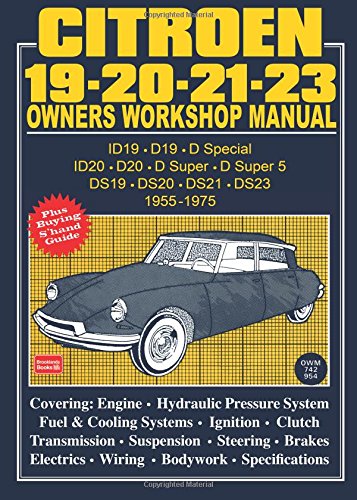
For the 1955 to 1975 ID19, DS19, D Special, ID20, D Super, D Super 5, DS19, DS20, DS21 and DS23. The engine, fuel system, cooling system, ignition, clutch, transmission, suspension, steering, brakes, wiring and bodywork are all included in this easy-to-follow repair guide.
Combination of 2 Autobook manuals which cover all models of the ‘Goddess’. Covering: fuel, hydraulic and cooling systems, suspension, electric, steering, engine, brakes, etc.

The automobile has long been a symbol of status, power, and autonomy, and ever since King Tut rolled through Egypt on his golden-wheeled chariot, artists and drivers have dreamed up mobile masterpieces. A striking photographic tribute and social history, Road Show navigates a path across high and low art, showing how people around the world are transforming their vehicles into stunning folk art, obsessive collections, social commentary, and visionary performances. In this fascinating showcase, we see how Henry Ford’s motto, “Any color as long as it’s black,” has been hung out to dry. From the Wienermobile to a hand-carved wooden Ferrari that drives in the canals of Venice to a giant red stiletto heel, Road Show brings the “museum of the streets” to life.
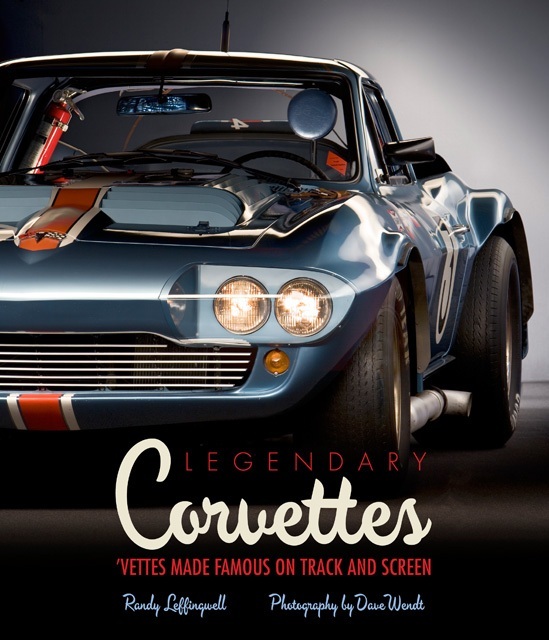
Chevrolet has never built an ordinary Corvette. Even the most mundane coupe draws a crowd everywhere it goes. But through victory at racetracks, exposure in film and television, or other notable achievements, a select few Corvettes have attained mythic status. Eighteen of the most legendary Corvettes of all time–from the earliest surviving Corvette ever built for the 1953 model year to the late first-generation Corvettes used in the classic television series Route 66 to the five Grand Sport racers built by Zora Arkus-Duntov, the Godfather of the Corvette, to a fifth-generation Corvette raced by the team that included father-and-son Dale Earnhardt and Dale Earnhardt Jr. just before the elder Earnhardt’s tragic death–are featured in this book.

The map may not be the territory, and the word may not be the thing, but this guide is as close as it gets.
Since its first publication by the Los Angeles County Museum of Art in 1965, this seminal vade mecum of Los Angeles architecture has explored every rich potency of the often relentless, but sometimes―as the authors have captured here―relenting L.A. cityscape. Revised extensively and updated rigorously since its fifth edition published in 2003, The Architectural Guidebook to Los Angeles now contains ninety-six sections organized in thirteen geographic chapters, boasting over 200 new additions to over thousands of entries cataloging every crease of Los Angeles County’s metropolitan sheath.
Originally written by leading architectural historians Robert Winter―described by Los Angeles Magazine as both the “spiritual godfather” and “father” of L.A. architecture―and the late, great David Gebhard, the guide has been revised and edited for a sixth edition by award-winning L.A. urban walker and Winter’s trusted collaborator Robert Inman. Nathan Masters, historian and Emmy-award-winning host, producer, and managing editor of KCET’s Lost LA, writes the foreword.
The Architectural Guidebook to Los Angeles, hailed by many as the built L.A. opus, explores the man made structures, gardens, parks, and other physical features of a fulgurous Los Angeles. With singular wit and brio, the authors artfully steward readers through all regions and styles, from the Spanish Mexican Period to Postmodern, American Take-over to High Tech, and Beaux-Arts to Craftsman. Sites covered begin with the missions of Spanish California and end with projects completed in 2017.
Dilettantes and experts, practitioners and students, aficionados and osmotic natives alike: all are blood type-compatible with this rich and peerless Bible for architecture enthusiasts. All of its own ilk, this book is thick and alive with a tone of its own making―and doing. A unique style of writing renders the guide simultaneously funny, tasteful, and historically-comprehensive, all with equal measure. Gebhard and Winter fill in the diegetic blanks with a droll eye. More than a critical reference for the bookshelves of scholars, enthusiasts, and practitioners alike, Architecture in Los Angeles is a faithful snapshot of the city as she lives and breathes.
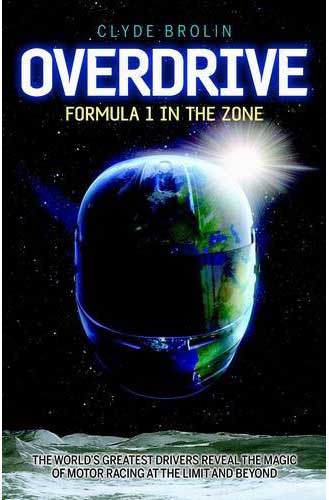
Listed in the Daily Telegraph’s top ten sports books of 2010, Overdrive draws on exclusive interviews with 100 of the world’s quickest men – from Stirling Moss through to Sebastian Vettel, Fernando Alonso, Michael Schumacher and Lewis Hamilton – to reveal the magic of motor racing at the limit and beyond. Ayrton Senna once famously crushed the F1 field at Monaco while in an apparent trance, an experience that led him to a spiritual rebirth. Overdrive reveals the grand prix greats have all shared aspects of Senna’s epiphany at their finest hours. To ride on a thousand screaming horses may seem an unlikely source of inner peace but life at 200mph can lead to surreal effects from slow motion to journeys out of the body. Stars of other sports confirm this mystical ‘Zone’ is accessible in any field but in motor racing only the masters tame it, bending time and space as they speed to Earthly laps of the gods. Overdrive is the first book to look deep inside their crash helmets and tell the story of how they do it. Damien Smith (Motor Sport) ‘Brolin risked being laughed at when asking drivers including Alonso, Schumacher and Hamilton if they have experienced out-of-body sensations. Instead, they were happy to oblige. The most original motor racing book of 2010? Without a doubt.’ Simon Briggs (Daily Telegraph) ‘The product of ten years labour, Overdrive is insightful and leaves you with a fresh perspective on F1 – exactly what Senna experienced in Monaco all those years ago.’ Julie Gueguen (FOFA) ‘Far from alpha males fighting it out, Overdrive pictures racers as profoundly human, sometimes mystical men. All agree the perfect lap justifies the years of sacrifice. Not the champagne…’ Laurence Edmondson (ESPNF1) ‘Overdrive leaves you looking at sport’s greatest achievements in a different light. The content is incredibly fresh and brilliant descriptions include darts player Bobby George: ‘Like a thousand starlings flying out of your a*******…’ Dan Cross (Motorsport Musings) ‘Fascinating as it is thought-provoking, Overdrive is no ordinary sports book. It has clearly been a labour of love for the author and his passion for the subject shines through on every page.’
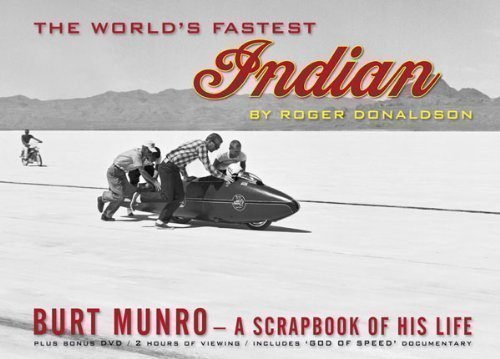
The real Burt Munro, inventor of the world’s fastest Indian motorcycle, in his own words. A fascinating collection of Burt Munro memorabilia including photos from his family album, newspaper clippings, and interviews with Burt himself, this book reveals the real Burt Munro—the man behind the movie. Roger Donaldson has been studying Burt Munro for many years. He made a documentary on him back in 1971, called Offerings to the God of Speed, as well as the 2005 international hit The World’s Fastest Indian. During research for both films, he collected lots of material which has never been published, and Burt’s son also released Munro family scrapbooks to Roger, allowing them to be published here for the first time. In preparation for the doco Roger interviewed Burt and also taped Burt chatting to several of his cronies and coworkers. These tapes have been transcribed for this book, presenting the real Burt Munro in his own words.
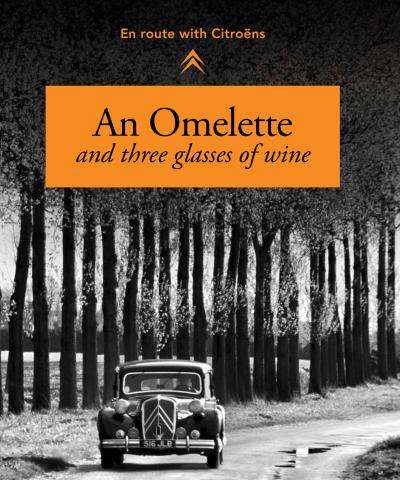
En Route with Citroens
This book is a compilation of 8 outstanding road trips produced for various magazines over the last 20 years. The book combines the beautiful motoring photography of Martyn Goddard with the evocative writing of three excellent motoring journalists, Phil Llewellin, Dale Drinnon and Paul Horrell. Mr Llewellin, who wrote most of the stories, was a very well regarded motoring and travel writer and these stories – journeys or adventures really – are all charmingly told and very accurate in the depth of detail. Several are taken from the iconic classic car magazine Super Car Classics. They recount trips in classic cars, mainly wonderful Citroens. But it is not just about cars, the trips are also about people and places and most importantly, food and wine, as discovered in different parts of France.
The majority of the photographs have never been seen before and are a stunning mix of reportage and beautifully crafted car images. Included are trip notes that give some background to the stories.
A great read for anyone who loves cars, travel, adventure or food and wine in any combination.
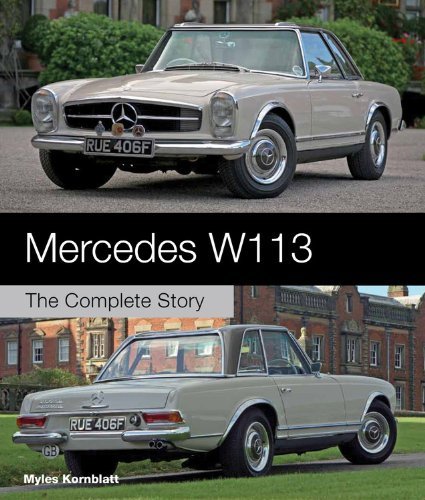
In 1963 the Mercedes W113 replaced two cars: the 300 SL racing legend and the successful 190 SL. In the process, the 230/250/280 SL two-seat coupe/roadster became an icon not only by carving out the perfect niche between its two predecessors, but also by being like no other car on the road. Mercedes W113 – The Complete Story explores both the technical and social side of how this legend was born. The book covers:The W113’s predecessors – the 300 SL and the 190 SL.Design and development of the 230, 250 and 280 SL models, including the distinctive concave ‘Pagoda’ roof and the ‘Californian Coupe’ rear seat option. Bela Barenyi’s innovations that made the 230 SL the first ‘safety sports car’. Rallying successes for the W113. The R107 successor. Specialist advice on ‘Pagoda’ restorations, and the W113 in popular culture.
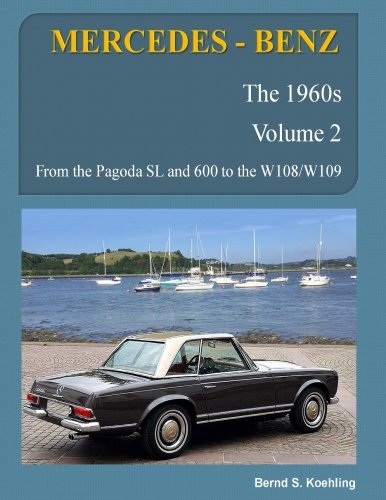
From the 230SL and 600 to the 300SEL 6.3
The Mercedes 300SEL 6.3 was a gamble, the 600 was at least for most European markets too big and flashy. The pagoda SL, launched at the same time as the 600, was an even bigger gamble. It had to replace not only the iconic 300SL, but also the more affordable 190SL. Only the W108 was not a gamble. It was the consequent evolution of a successful executive car that finally did away with the “one body fits all engines” philosophy. This 290-page book was last updated in Dec. 2016 and covers them all: the 600, Pagoda SL and the W108/109 with six- and eight-cylinder engines. It is one of over twenty-five books/e-books by the author about Mercedes cars. And these are some of the topics covered:
- you can read about the complete development and history of each model from the 230SL and 600 to the 300SEL 6.3
- a comprehensive buyer’s guide will help you to avoid costly mistakes, when looking for a W113, W108 or W109 model
- chassis number and data card are explained in great detail
- it looks at value changes over time on certain variants
- some 230 recent non-Daimler AG color photos highlight many interesting and unique features, this includes pictures of the suspension and
A technical section covers their paint and upholstery options, the production history plus engine and performance data of each model.



